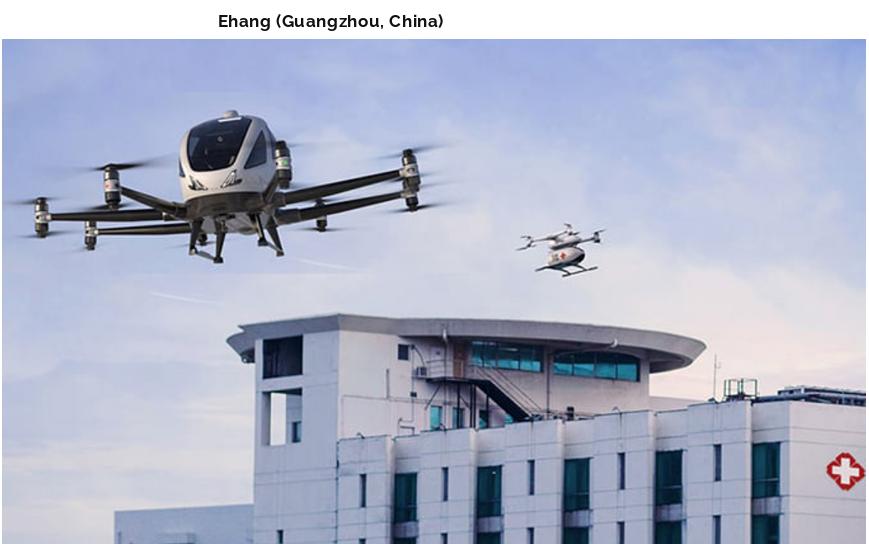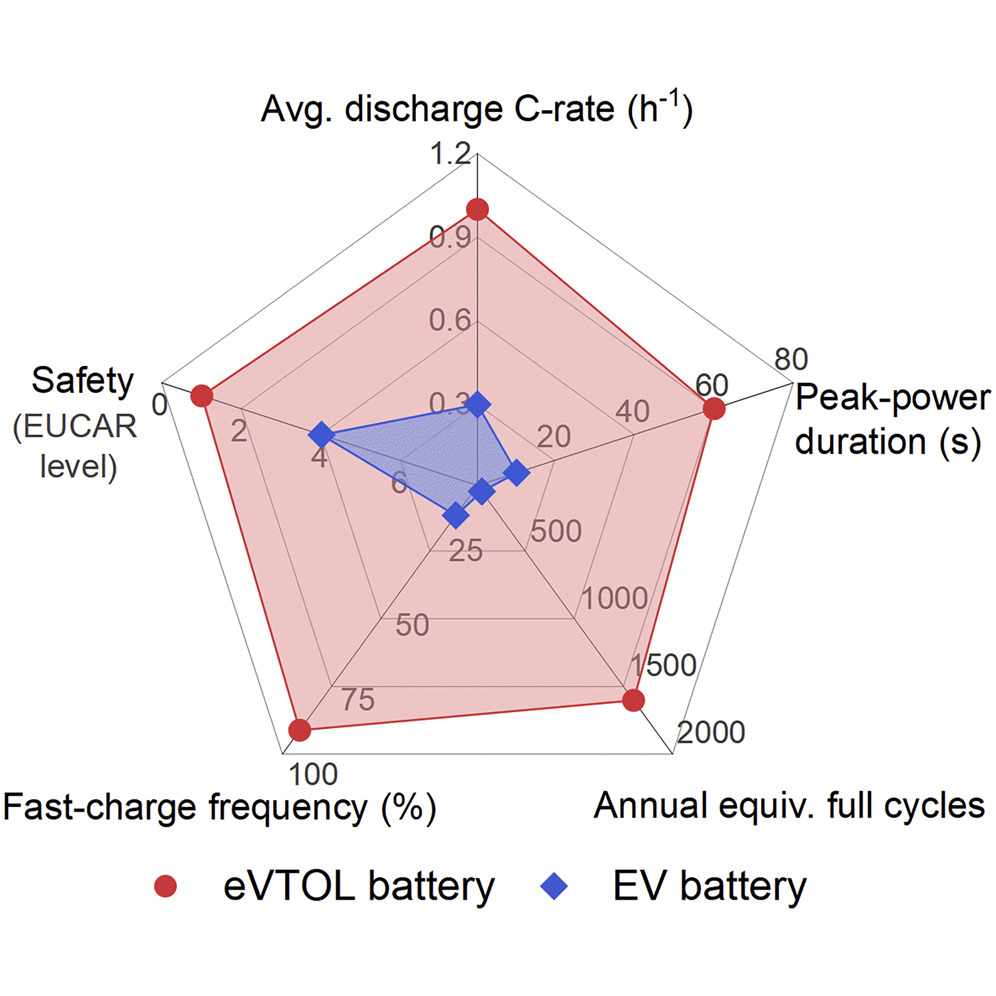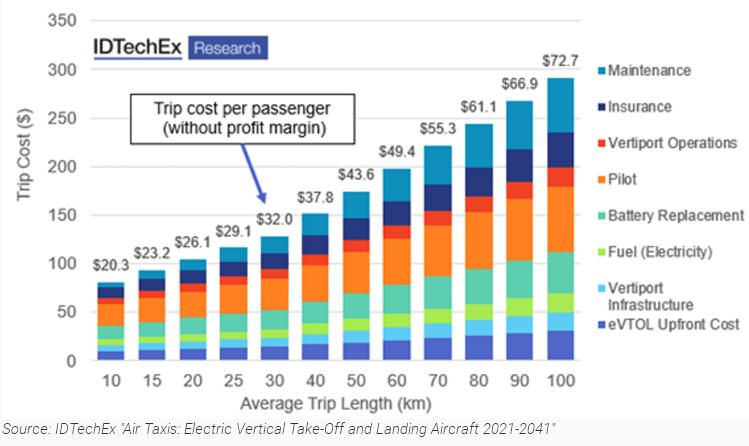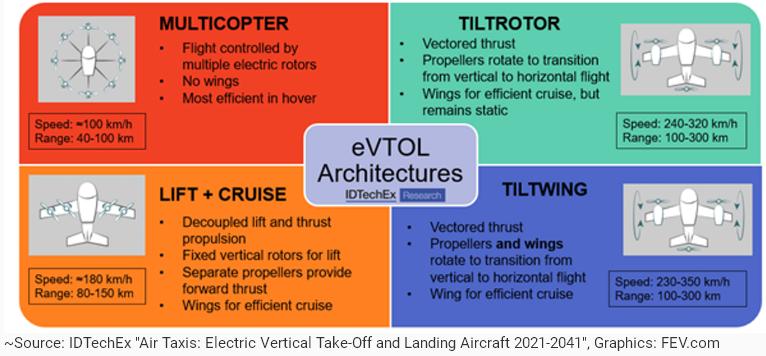博文
创新电池催生飞行汽车问世
||
创新电池催生飞行汽车问世
诸平


据美国宾夕法尼亚州立大学(Pennsylvania State University)2021年6月7日提供的消息,该校的研究人员创新电池研发,催生飞行汽车问世。喷气背包、机器人女仆和飞行汽车都是 21世纪的承诺。人们得到了机械化、自主的真空吸尘器。现在,美国宾夕法尼亚州立大学的一组研究人员正在探索对电动垂直起降 (eVTOL) 车辆的要求,并设计和测试潜在的电池电源。相关研究结果于2021年6月7日已经在《焦耳》(Joule)杂志网站发表——Xiao-Guang Yang, Teng Liu, Shanhai Ge, Eric Rountree, Chao-Yang Wang. Challenges and key requirements of batteries for electric vertical takeoff and landing aircraft. Joule, 2021; DOI: 10.1016/j.joule.2021.05.001
宾夕法尼亚州立大学机械工程系主任兼电化学发动机中心主任王朝阳(Chao-Yang Wang)说:“我认为飞行汽车有可能消除大量时间并提高生产力,并为交通开辟空中走廊。但是电动垂直起降飞行器对电池来说是一项非常具有挑战性的技术。”
研究人员定义了飞行汽车电池的技术要求,并于6月7日在《焦耳》杂志发表的论文中报告了原型电池。
王朝阳说:“飞行汽车的电池需要非常高的能量密度,这样你才能留在空中。而且它们在起飞和着陆过程中也需要非常大的动力。垂直上下需要的动力更大。”
王朝阳指出,电池还需要快速充电,以便在高峰时段获得高收入。他看到这些车辆频繁起飞和着陆,并且经常快速充电。
王朝阳说:“在商业上,我希望这些车辆在高峰时段每天行驶15趟,以证明车辆的成本是合理的。第一次使用可能是从一个城市到一个载有三到四个人的机场,大约50英里(80.5 km)。”
重量也是这些电池的一个考虑因素,因为车辆的升降和电池是同步的。据王朝阳说,一旦 eVTOL起飞,短途旅行的平均速度将是每小时 100英里(161 km/h),长途旅行的平均速度将是每小时 200英里(322 km/h)。
研究人员通过实验测试了两个能量密集型锂离子电池,它们可以在5到10分钟内为50英里的eVTOL行程充电。这些电池在其使用寿命期间可承受2000多次快速充电。
王朝阳和他的团队使用了他们一直致力于电动汽车电池的技术。关键是加热电池以允许快速充电,而不会形成损坏电池且危险的锂尖刺(lithium spikes)。事实证明,加热电池还可以快速释放电池中的能量,从而实现起飞和着陆。
研究人员通过加入镍箔来加热电池,使电池迅速达到华氏140度(140℉相当于60℃)。
王朝阳说:“在正常情况下,eVTOL 电池所需的三个属性相互影响。高能量密度减少了快速充电,而快速充电通常会减少可能的充电循环次数。但我们能够在一个电池中完成这三项工作。”
飞行汽车的一个完全独特的方面是电池必须始终保持一定的电量。例如,与手机电池在完全放电和充电后效果最佳的情况不同,飞行汽车电池永远不能在空中完全放电,因为在空中停留和着陆都需要电力。飞行汽车电池总是需要有一个安全边际。
当电池电量耗尽时,充电内阻较低,但剩余电量越高,就越难以将更多能量注入电池。通常,充电会随着电池充满而减慢。然而,通过加热电池,充电可以保持在五到十分钟的范围内。
王朝阳说:“我希望我们在这篇论文中所做的工作能让人们有一个坚实的想法,即我们不需要再过 20 年才能最终获得这些车辆,我相信我们已经证明 eVTOL 在商业上是可行的。”
该项研究得到了美国能源部的能源效率和可再生能源办公室(U.S. Department of Energy's Office of Energy Efficiency and Renewable Energy)、美国空军小企业技术转让计划(U.S. Air Force Small Business Technology Transfer program)和 William E. Diefenderfer Endowment的资助。上述介绍仅供参考,欲了解更多信息敬请注意浏览原文或者相关报道。
Air Taxis: Electric Vertical Take-Off and Landing Aircraft 2021-2041
Are Batteries Truly Enough to Power eVTOLs?
Analyzing some of the latest technological developments for eVTOL battery power.
eVTOL Investments Will Continue Billion Dollar Trend in 2021
Will 2021 Be the Year of the eVTOL?
10 eVTOL Development Programs to Watch in 2021
1) Joby Aviation (Marina, California)
2) Jaunt Air Mobility (Dallas, Texas)
3) Archer Aviation (Palo Alto Airport, California)
4) Volocopter (Bruschal, Germany)
5) Lilium (Munich, Germany)
6) Wisk (California and New Zealand)
7) Airbus (Toulouse, France)
8) Ehang (Guangzhou, China)
9) Vertical Aerospace (Bristol, U.K.)
10) Urban Aeronautics (Tel Aviv, Israel)
Electric vertical takeoff and landing (eVTOL) aircraft, also known as flying cars, have emerged as the most disruptive technology to transform future urban mobility systems. Their unique operating profiles and requirements present formidable challenges to batteries. This work analyzes the primary performance metrics required for eVTOL batteries compared with electric vehicle (EV) batteries. We reveal that eVTOL batteries operate at higher C-rates and have longer peak-power durations than EV batteries. Also, it is vital to fast charge sufficient energy in passenger-swapping gaps to ensure continuous eVTOL operation in rush hours, and the high vehicle utilization rate poses a critical challenge to battery cycle life. Further, eVTOL batteries should continue functioning even after a safety incident occurs until a safe landing.
Notably, we highlight the importance of fast charging, which is essential for downsizing aircraft and batteries to reduce cost while achieving high vehicle use rates to maximize revenues. We stress that any fast-charging technology should fulfill three metrics simultaneously—charge time less than passenger swapping (5–10 min), charged energy sufficient for the next trip, and a long cycle life. We experimentally demonstrate two energy-dense Li-ion battery designs that can recharge adequate energy for 80 km eVTOL trips in 5–10 min and sustain over 2,000 fast-charge cycles. We hope that these initial designs will spur exciting development of eVTOL batteries.
Electric vertical takeoff and landing (eVTOL) aircraft have attracted considerable interest as a disruptive technology to transform future transportation systems. Their unique operating profiles and requirements present grand challenges to batteries. This work identifies the primary battery requirements for eVTOL in terms of specific energy and power, fast charging, cycle life, and safety, revealing that eVTOL batteries have more stringent requirements than electric vehicle batteries in all aspects. Notably, we find that fast charging is essential for downsizing aircraft and batteries for low cost while achieving high vehicle utilization rates to maximize revenues. We experimentally demonstrate two energy-dense Li-ion battery designs that can recharge adequate energy for 80 km eVTOL trips in 5–10 min and sustain over 2,000 fast-charge cycles, laying a foundation for eVTOL batteries.

https://blog.sciencenet.cn/blog-212210-1290330.html
上一篇:ExoSCOPE:世界首例实时监测癌症治疗成功的好帮手
下一篇:湖南大学的超短沟道垂直场效应晶体管

